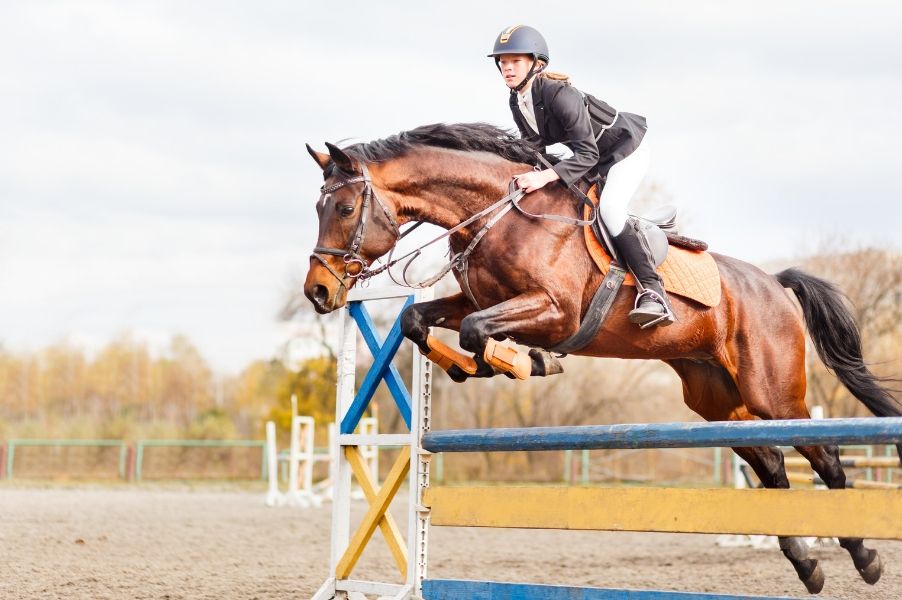
Horseback riding is perhaps the most well-known discipline of riding in the world. All over the world, there are national and international jumping competitions attended by the best jump riders and the best horses. The jumping, too many, is one of the modalities of the riding more exciting.
Anyone who has tried to jump will experience the feeling of wanting one more jump, a little higher, a little better.
In obstacle jumps, there are different categories, depending on your age and your level. There are also many types of jumps that we will encounter, distinguishing between three kinds of groups.:
- Vertical
- Background
- Mix
- Vertical:
These are isolated jumps, which require a not too high speed for the horse to arrive without touching it. For the horse, these jumps are the most difficult, since
The horse needs to get as close as possible to the leap to passing it in shape, soft and round. Within the vertical drops we can find:
- Bulletin
- Walls
- Cancel
- Isolated bars placed in many forms.
- Background
These jumps are composed in two or three parts. They consist of a forward Bar and a back bar, leaving a space between them. The wider the space between the bars, the more the horse will have to be stretched. This jump is complicated and requires a lot of effort from the horse, as it is a vertical jump, depending on the height of the bars and a horizontal jump, depending on the distance between the first and the second bar. The design of these jumps can vary; we can find three-bar backgrounds, which are staggered volleys or bottoms where the two bars are at the same height.
- Mix
It’s several jumps together. Distinguish:
- Doubles: where there are one or two trances between two vertical jumps or backgrounds.
- Triples: they are three jumps, vertical or background, with one or two trances between them.
- Falling and leaving: these are combinations in which there is no traffic involved, they require a controlled, balanced, and perfect relationship, in which the horse learns to sit on his feet and balance itself.
- Position: As always, balance is the basis of the jump. Practice, constancy, and skill, of course, also influence.
The lower part of the leg is the most essential; it should not be moved during the jump; it should be strong.
The rider must keep his weight above the horse’s center of gravity. Don’t get ahead of yourself; don’t delay the movement.
The heels should not be raised, for that, you have to climb the stirrups one or two points, because if they are too long, the legs will go backward and it will be impossible to bend to the wing with the horse. If we shorten the stirrups too much, they will be ineffective. Shoulders relaxed, hands stretched forward, towards the neck of the horse.
It must be borne in mind that during the jump, horse and rider must become one, that is, the passenger must be the complement of the horse, accompanying him, noticing his trances, his beat.
Support: releasing support in front of a jump is one of the most prevalent defects that occur. When the horse is already facing the jump, the rider loses contact in the last trance of the horse, it is the opposite of the fixed hands. This causes the horse to lose confidence, to believe that the rider has decided that he does not want to jump, and so the only thing he will achieve will be that the horse will get out of the jump or jump by instinct. So, in the next jump it will be the one who decides whether to jump or not. Contact must be constant during the jump.
But we have to say everything, even if this discipline seems very lovely, horses often go in tension and the long run the consequences appear to them. Also, by making the jump so high, they suffer a lot in front hands and often have problems in tendons as much as in bones and ligaments.
